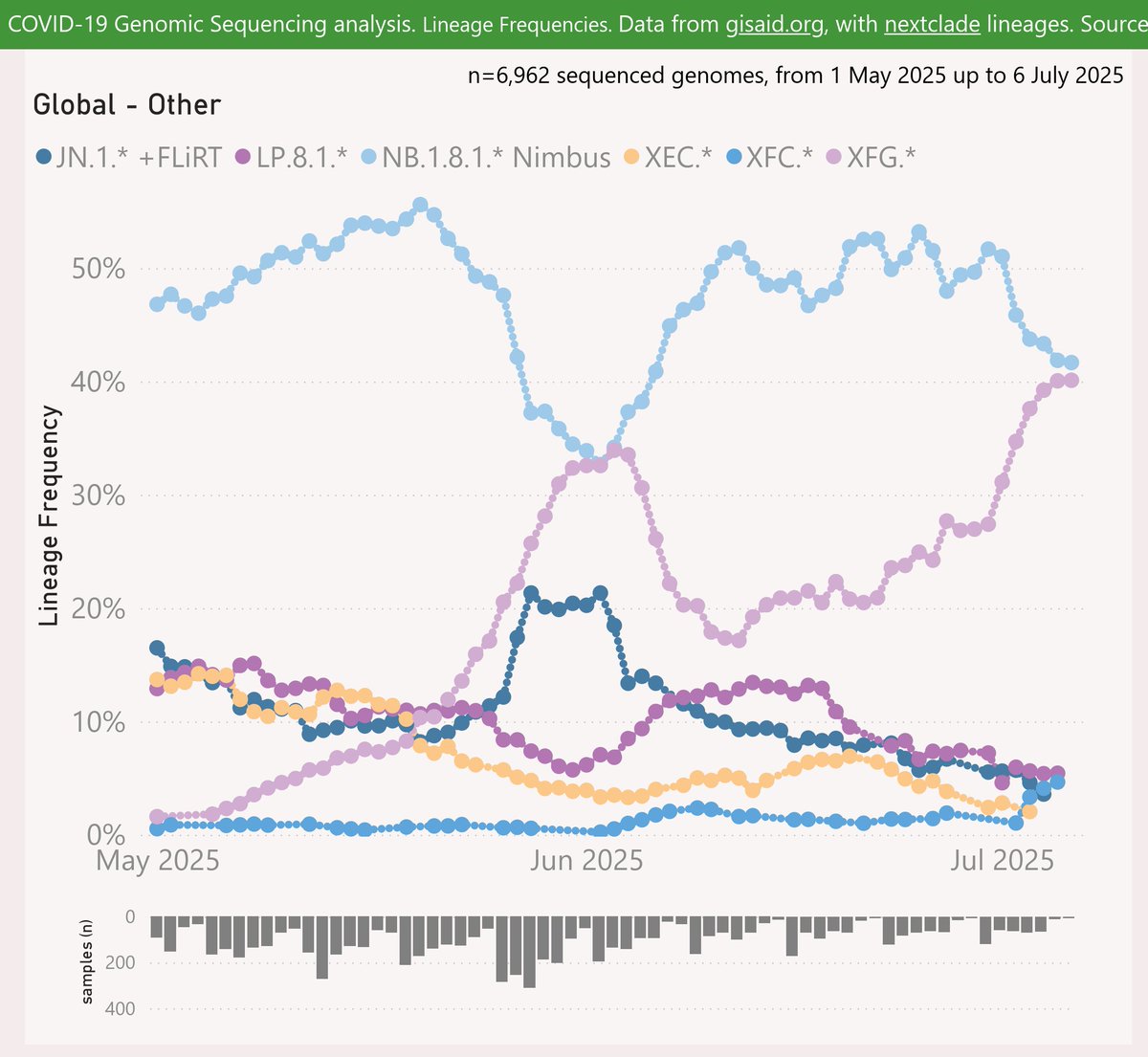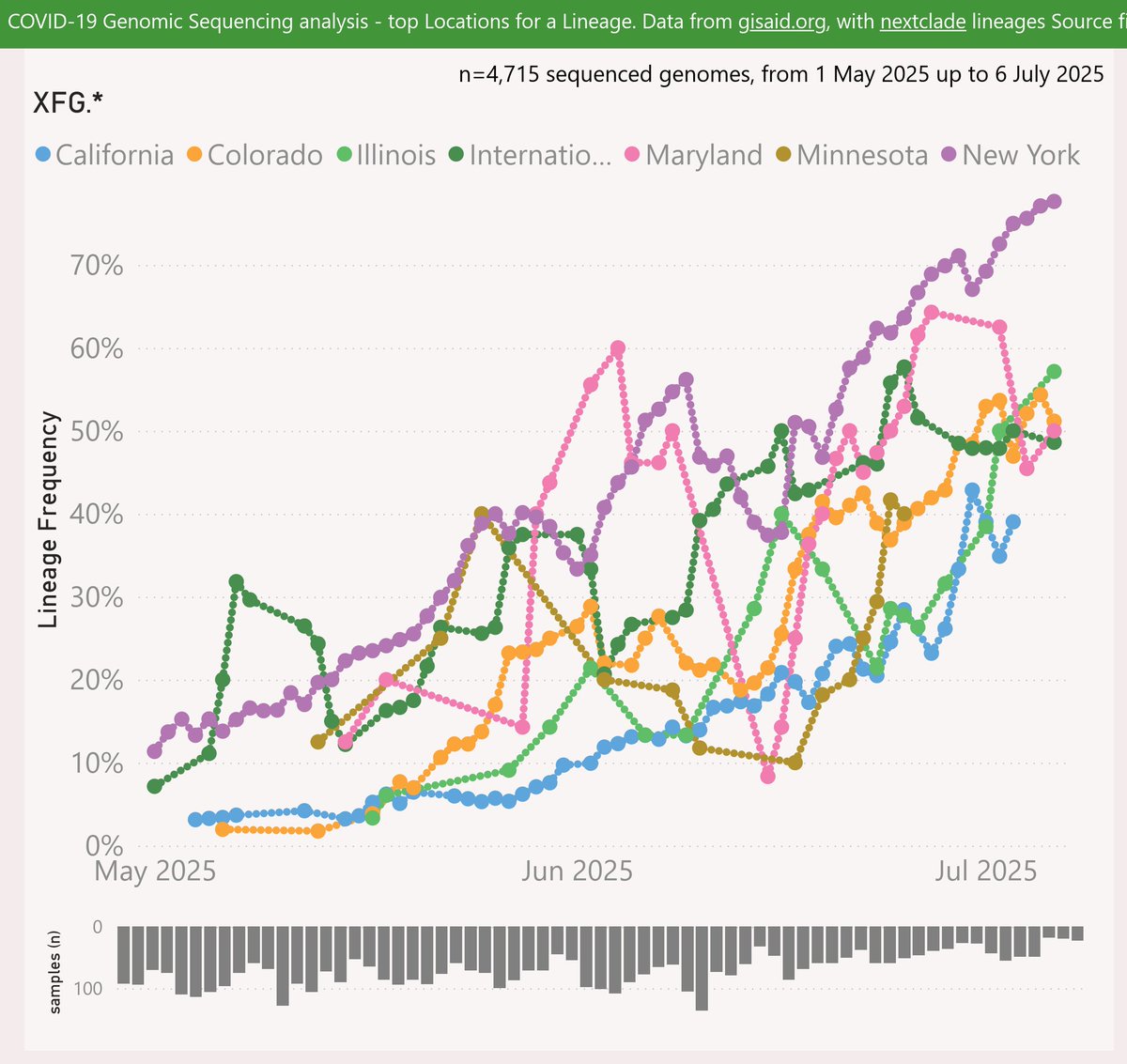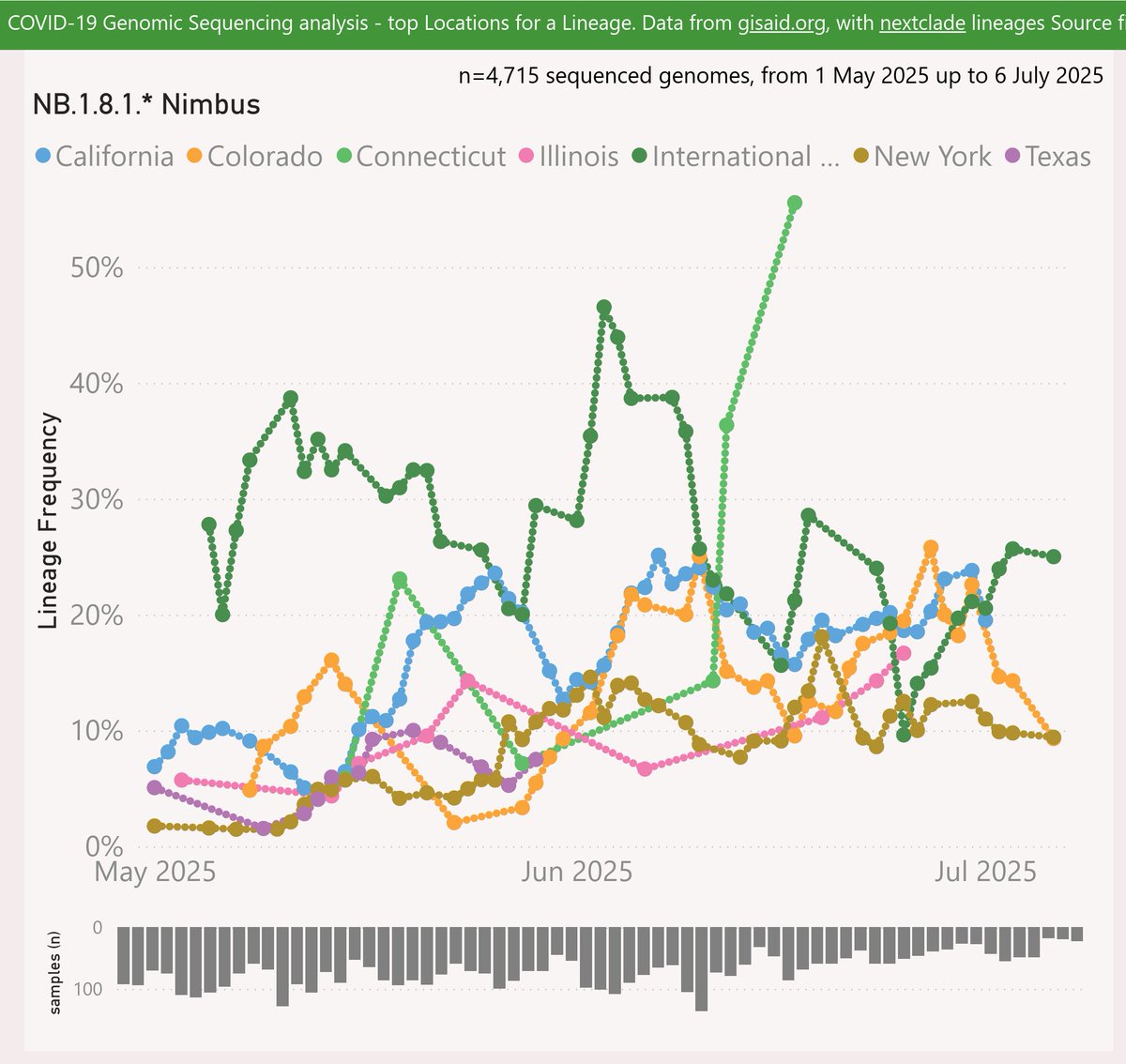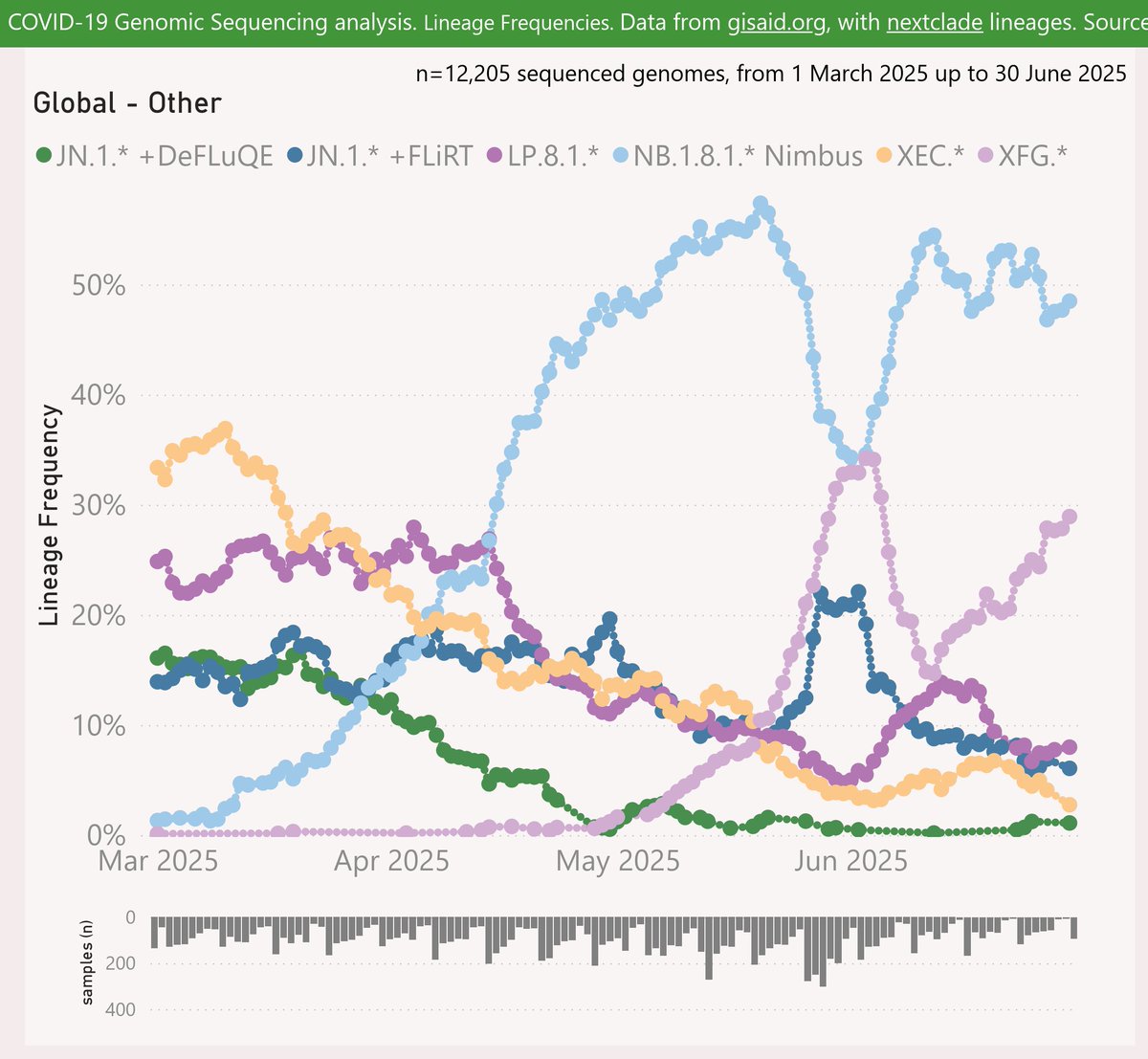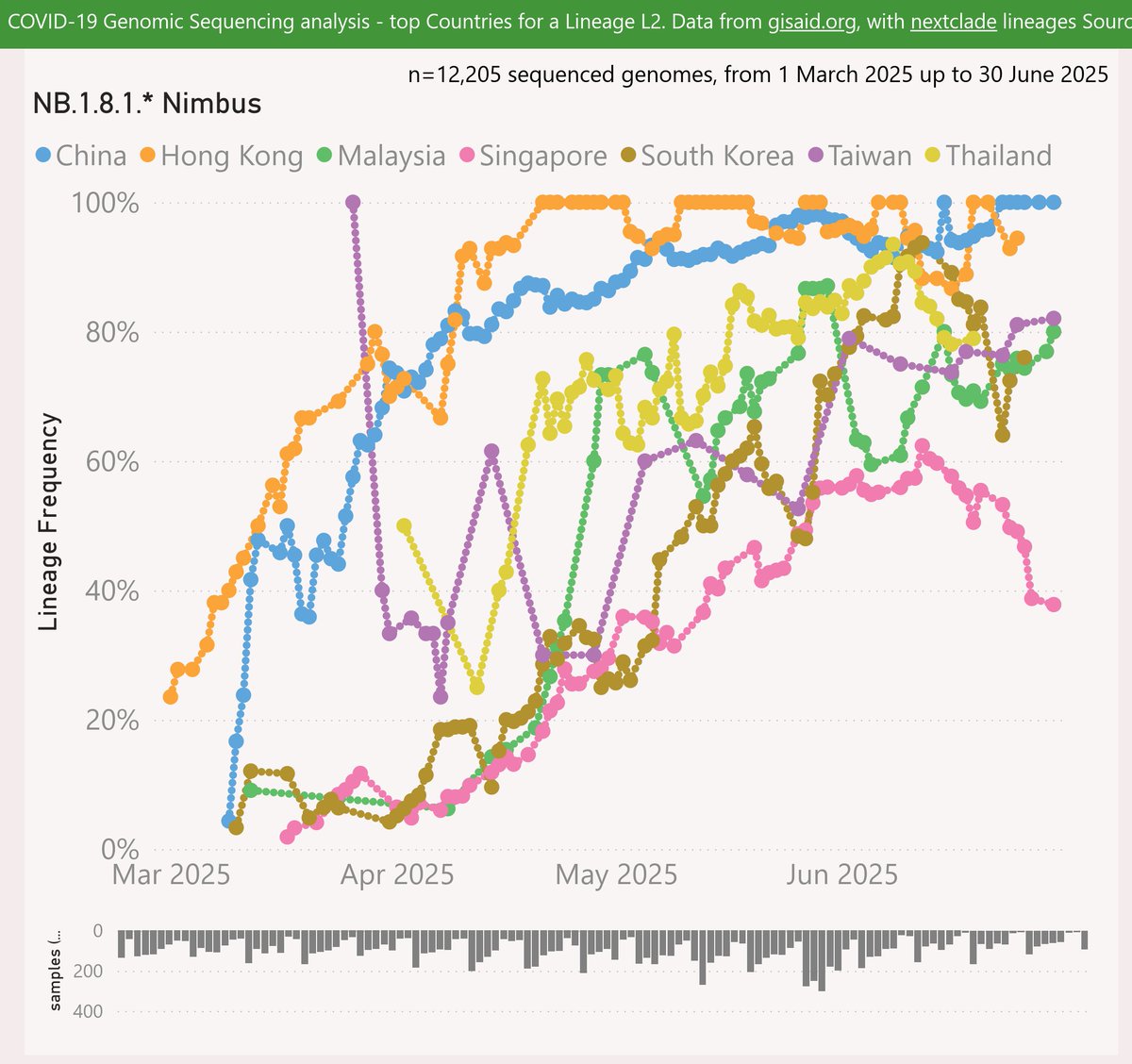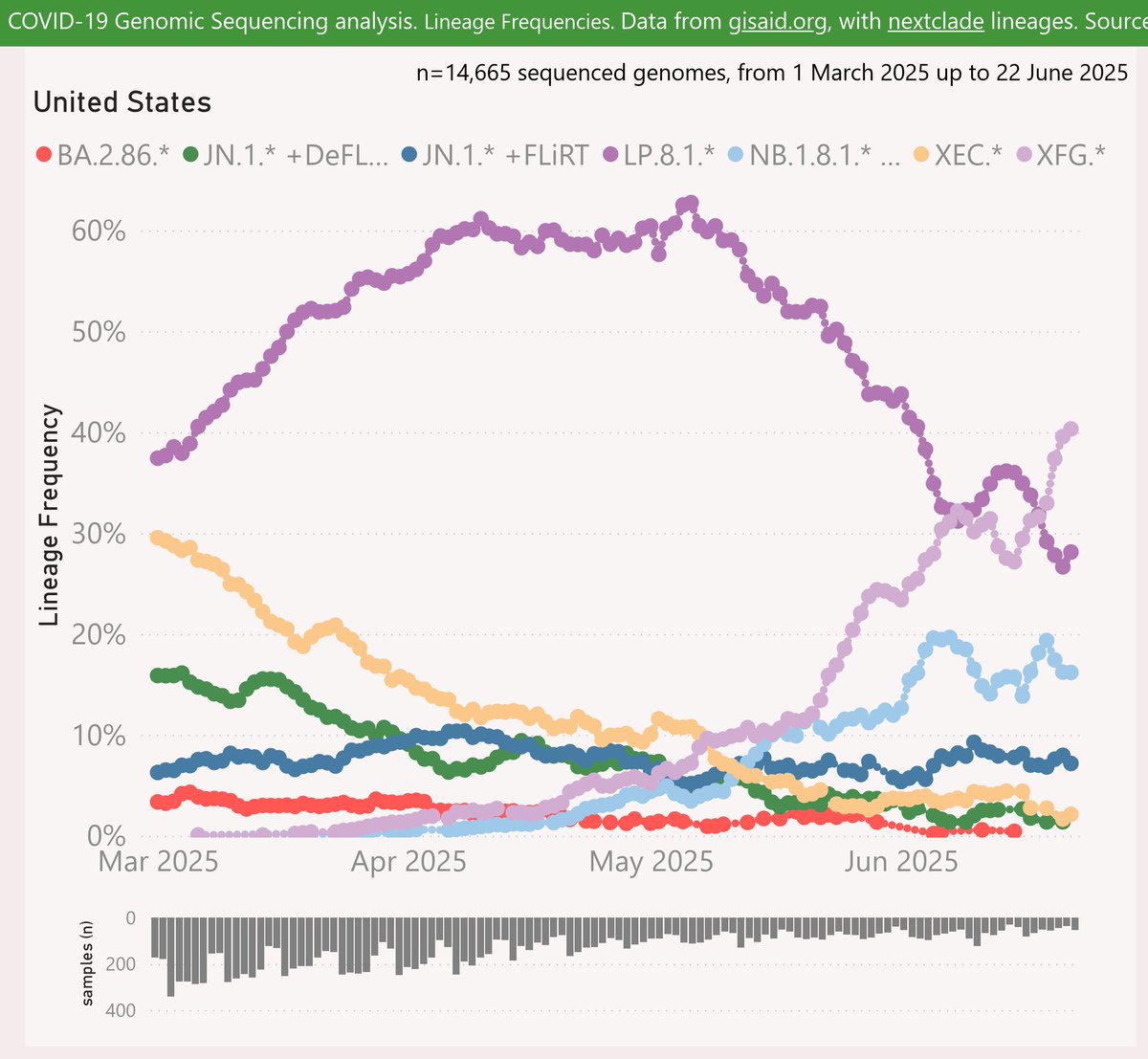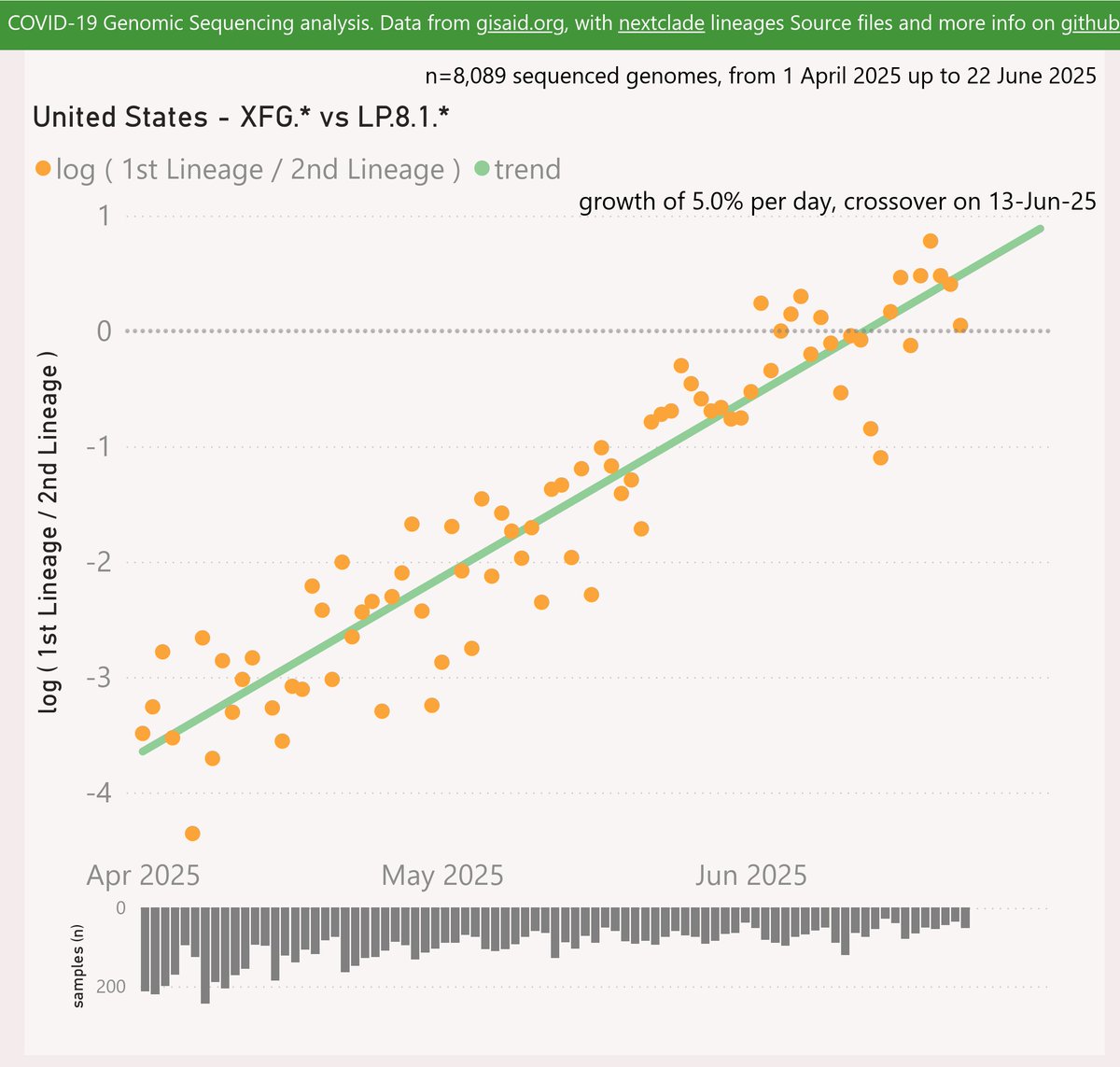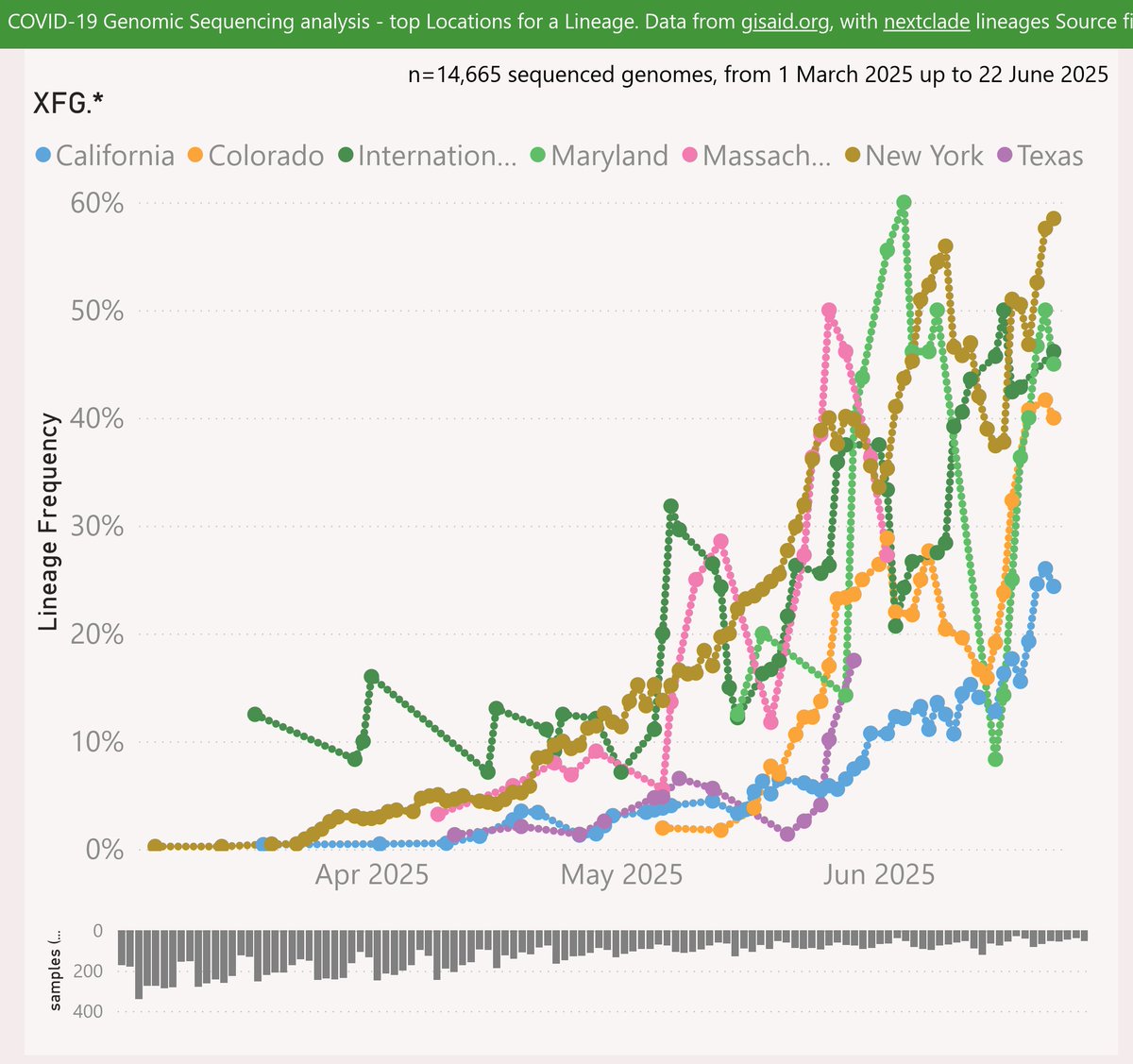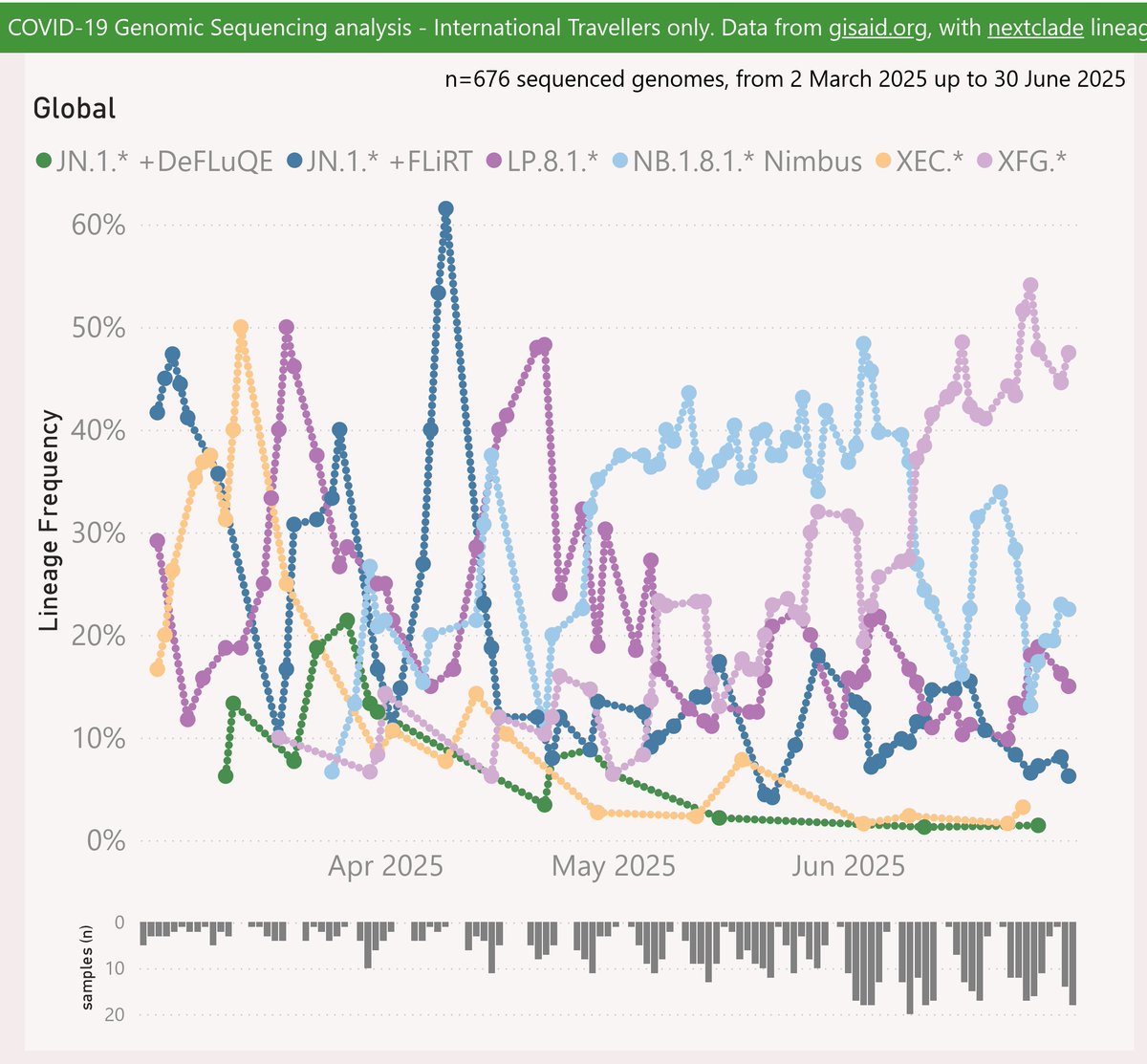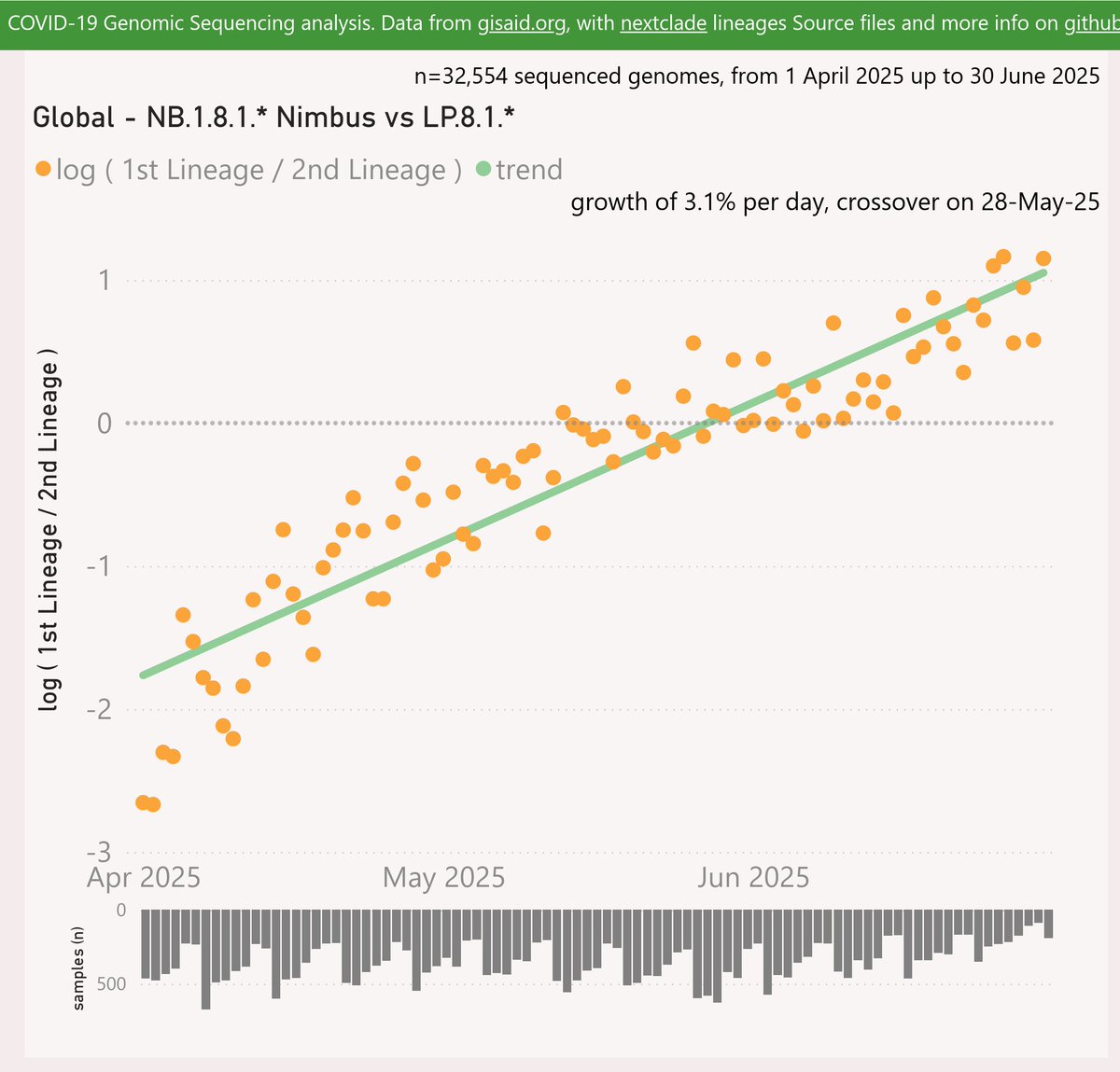[heavy sigh]
With the NB.1.8.1 "Nimbus" and XFG.* "Stratus" variants carving up dominance around the globe, it is time to ponder which variant might drive the next wave.
The leading contenders at this point are PY.1.1.1 and XFV.
#COVID19 #PY_1_1_1 #XFV
🧵
With the NB.1.8.1 "Nimbus" and XFG.* "Stratus" variants carving up dominance around the globe, it is time to ponder which variant might drive the next wave.
The leading contenders at this point are PY.1.1.1 and XFV.
#COVID19 #PY_1_1_1 #XFV
🧵

PY.1.1.1 is descended from "FLiRT" variant LF.7.9.1. PY.1.1 added the K679R mutation, then PY.1.1.1 added A435S (same mutation that characterised NB.1.8.1).
PY.1.1.1 is presumed to have originated from India, rising sharply to 14% frequency there in June.
🧵
PY.1.1.1 is presumed to have originated from India, rising sharply to 14% frequency there in June.
🧵
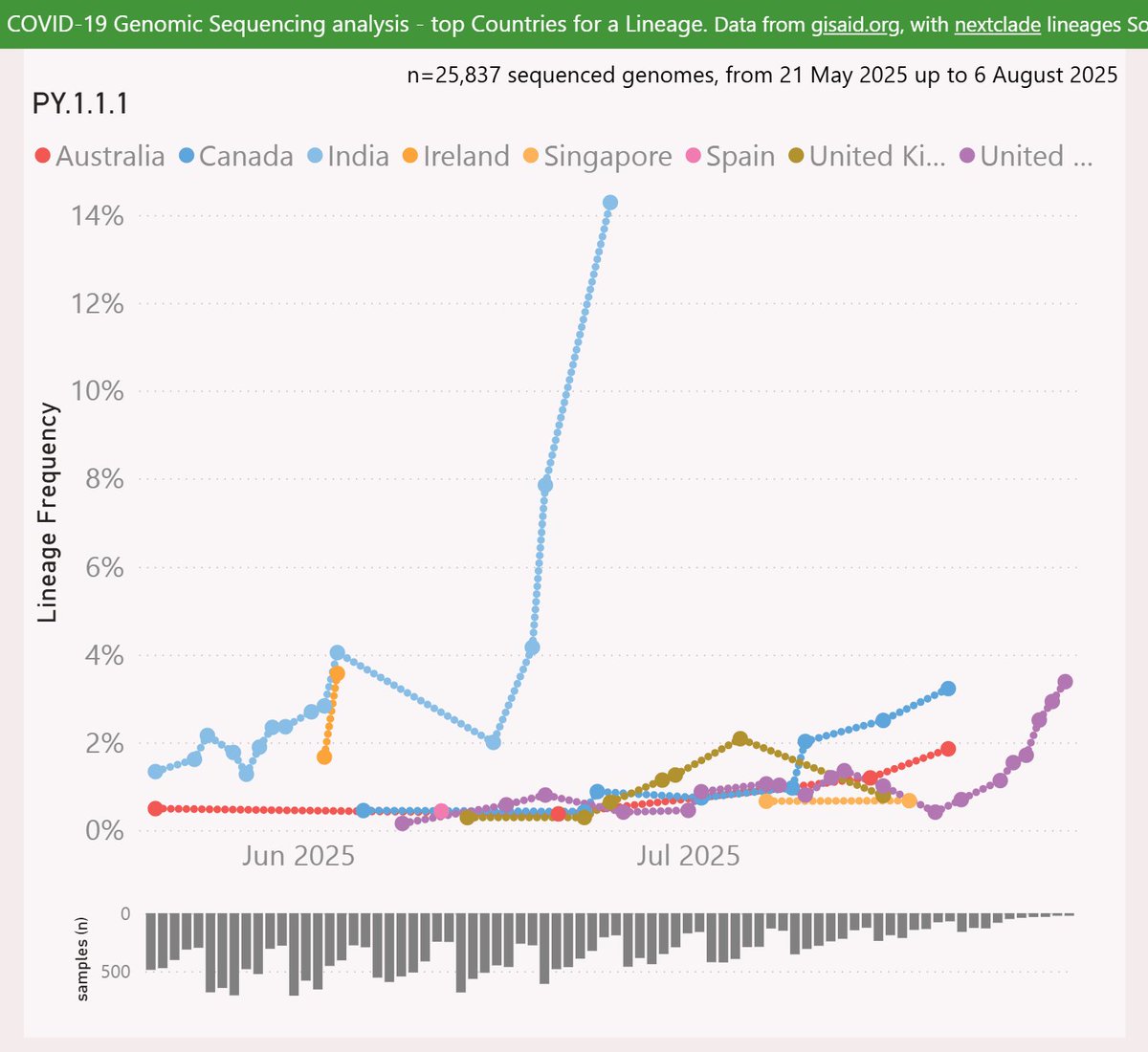
PY.1.1.1 has also shown signs of growth in several other countries, notably rising to 3% in Canada and the US.
🧵
🧵
Here’s the latest detailed variant picture for India. While there were robust data volumes shared during May and early June, those dwindled to a trickle and have not been updated since late June.
It looks like PY.1.1.1 was on a trajectory to become dominant at that point.
🧵
It looks like PY.1.1.1 was on a trajectory to become dominant at that point.
🧵

Here are the International Traveller samples of PY.1.1.1. India has been the most commonly-reported country of origin.
This dataset (mostly arrivals in the US and Japan) is arguably more random, as it is not skewed by sequencing volumes.
🧵
This dataset (mostly arrivals in the US and Japan) is arguably more random, as it is not skewed by sequencing volumes.
🧵

Here's an animated map showing the spread of the PY.1.1.1 variant. The first samples were reported simultaneously from Manipur, India and New South Wales, Australia in late May
It was soon reported across Asia, North America and Europe and then spread rapidly around the globe
🧵
It was soon reported across Asia, North America and Europe and then spread rapidly around the globe
🧵
It has been particularly successful in India.
Locations are approximate - typically country and state/province.
🧵
Locations are approximate - typically country and state/province.
🧵
Audio credit:
Swarm_Bees_outdoor_stereo by leonseptavaux -- -- License: Attribution 4.0
🧵freesound.org/s/573839/
Swarm_Bees_outdoor_stereo by leonseptavaux -- -- License: Attribution 4.0
🧵freesound.org/s/573839/
XFV is a recombinant of LP.8.1, XFG.3.3.1, with a presumed origin in the Basque Country of Spain in April.
XFV has shown strong growth in Brazil reaching 33%, and in the UK to 8%.
🧵
XFV has shown strong growth in Brazil reaching 33%, and in the UK to 8%.
🧵

Here's an animated map showing the spread of the XFV variant. The first sample was reported the Basque Country of Spain in April.
In May it eventually spread to Scotland, UK and Rio Grande do Norte, Brazil.
🧵
In May it eventually spread to Scotland, UK and Rio Grande do Norte, Brazil.
🧵
XFV was quite successful in those 3 countries during June and July, before finally appearing in a couple of local samples in New York.
Locations are approximate - typically country and state/province.
🧵
Locations are approximate - typically country and state/province.
🧵
Audio credit:
Swarm_Bees_outdoor_stereo by leonseptavaux -- -- License: Attribution 4.0
🧵freesound.org/s/573839/
Swarm_Bees_outdoor_stereo by leonseptavaux -- -- License: Attribution 4.0
🧵freesound.org/s/573839/
I will start with PY.1.1.1 as my leading contender, based on it’s broader geographical distribution, including many countries with low and/or patchy data volumes.
🧵
🧵
Also there have been 11 samples of PY.1.1.1 reported in the International Traveller samples – the most representative sample set with a global perspective. There has been no XFV detected in that set, after several months.
I will continue to monitor this topic.
🧵
I will continue to monitor this topic.
🧵
The usual caveats apply - recent sample sizes are smaller which might skew these results, and “global” sequencing data is dominated by wealthy countries, with many under-sampled regions.
🧵
🧵
Huge thanks to all the dedicated variant hunters who persevere with their crucial work away from the limelight, especially to Federico Gueli for his tips on new lineages, eg
🧵skyview.social/?url=https%3A%…
🧵skyview.social/?url=https%3A%…
Interactive genomic sequencing dataviz, code, acknowledgements and more info here:
🧵 endsgithub.com/Mike-Honey/cov…
🧵 endsgithub.com/Mike-Honey/cov…
• • •
Missing some Tweet in this thread? You can try to
force a refresh


